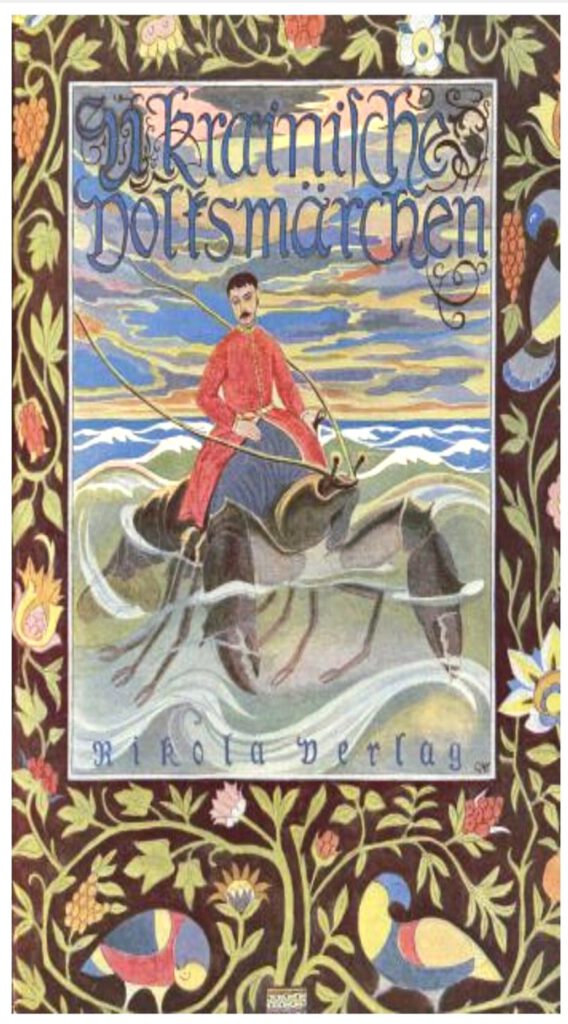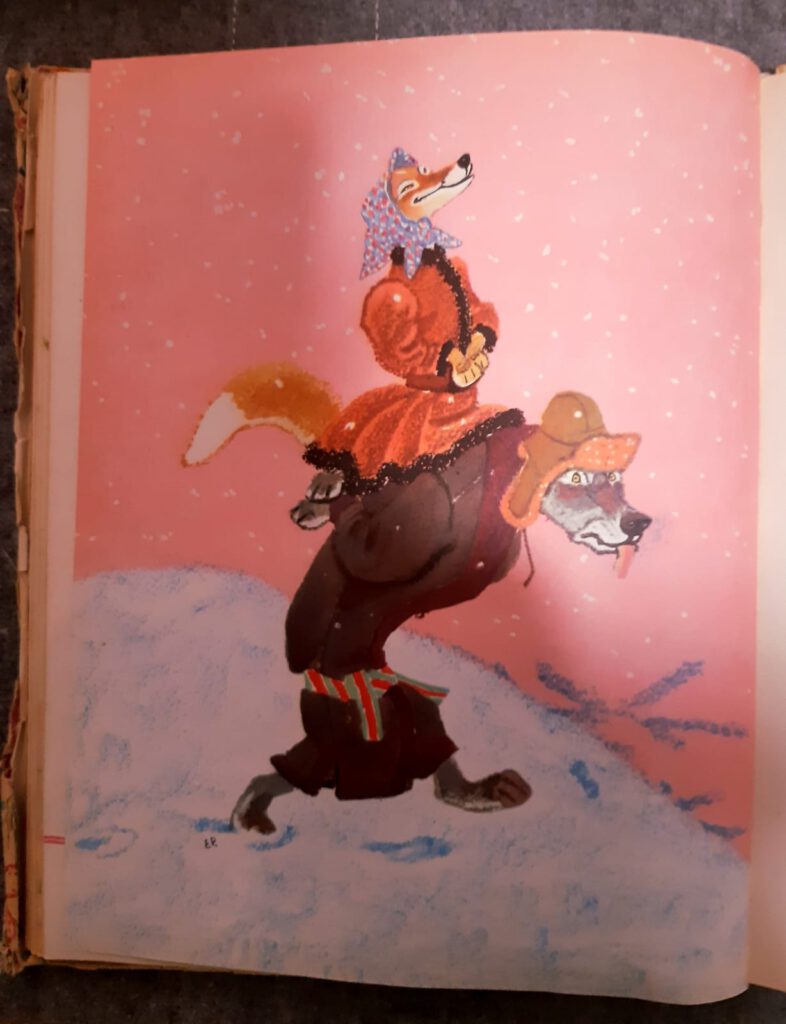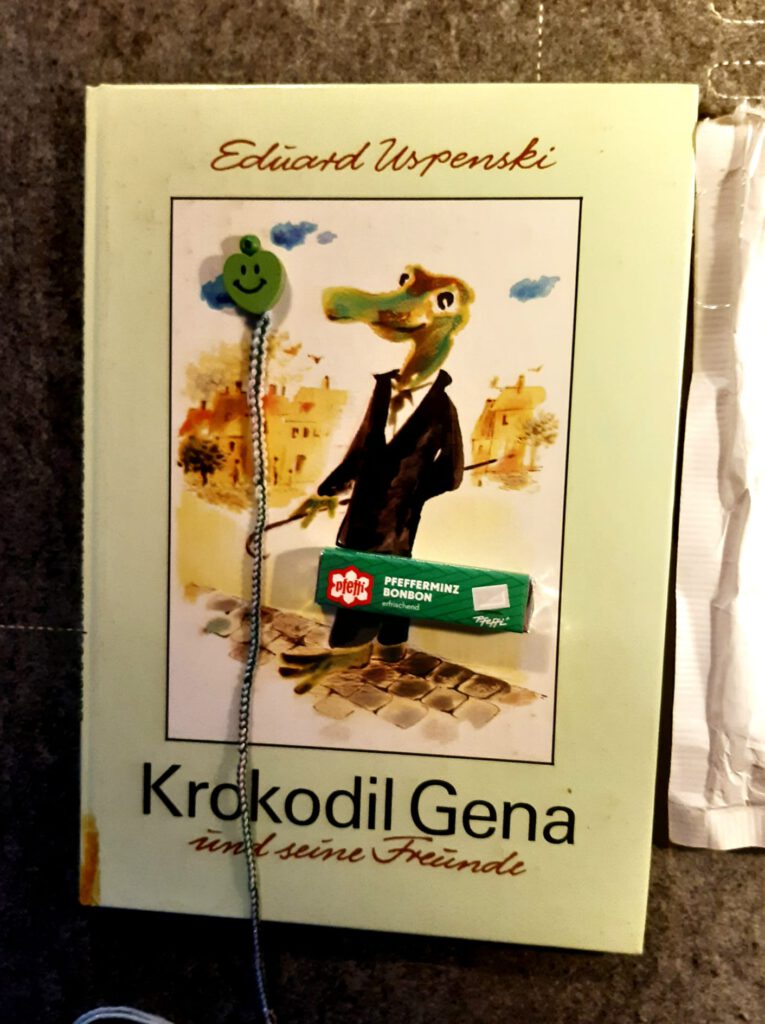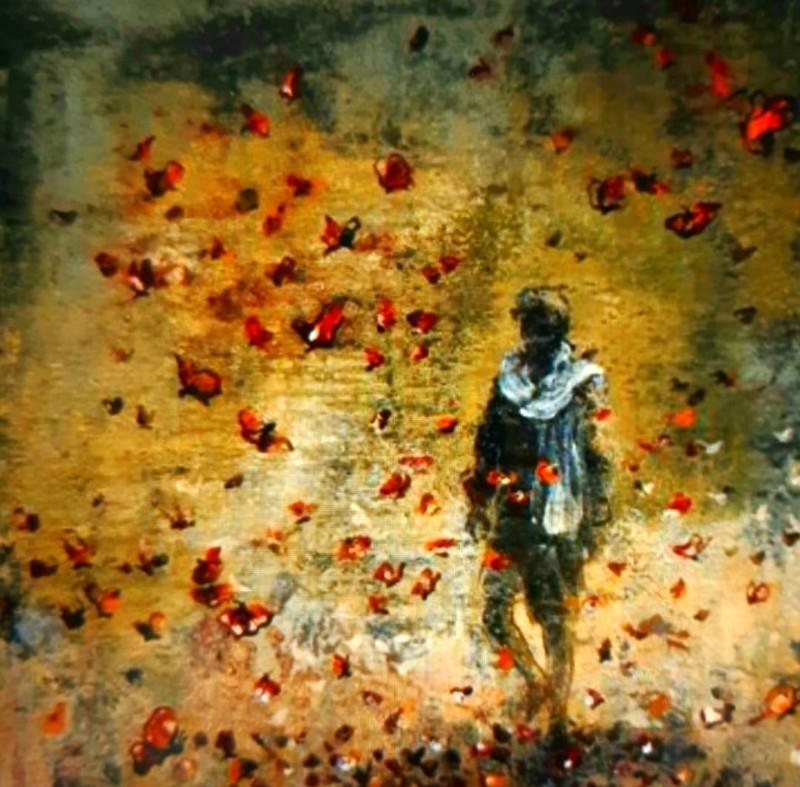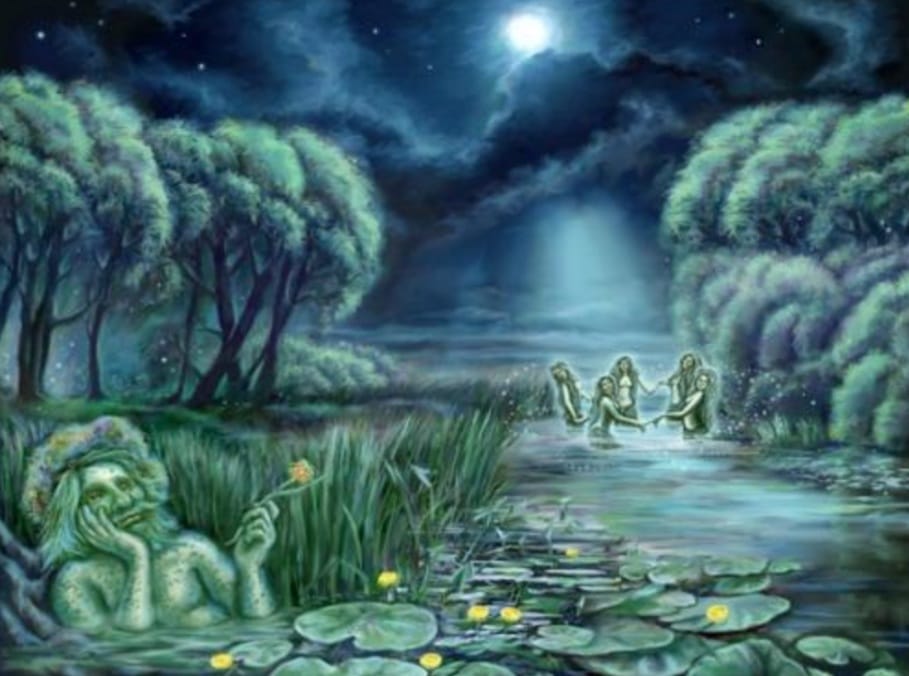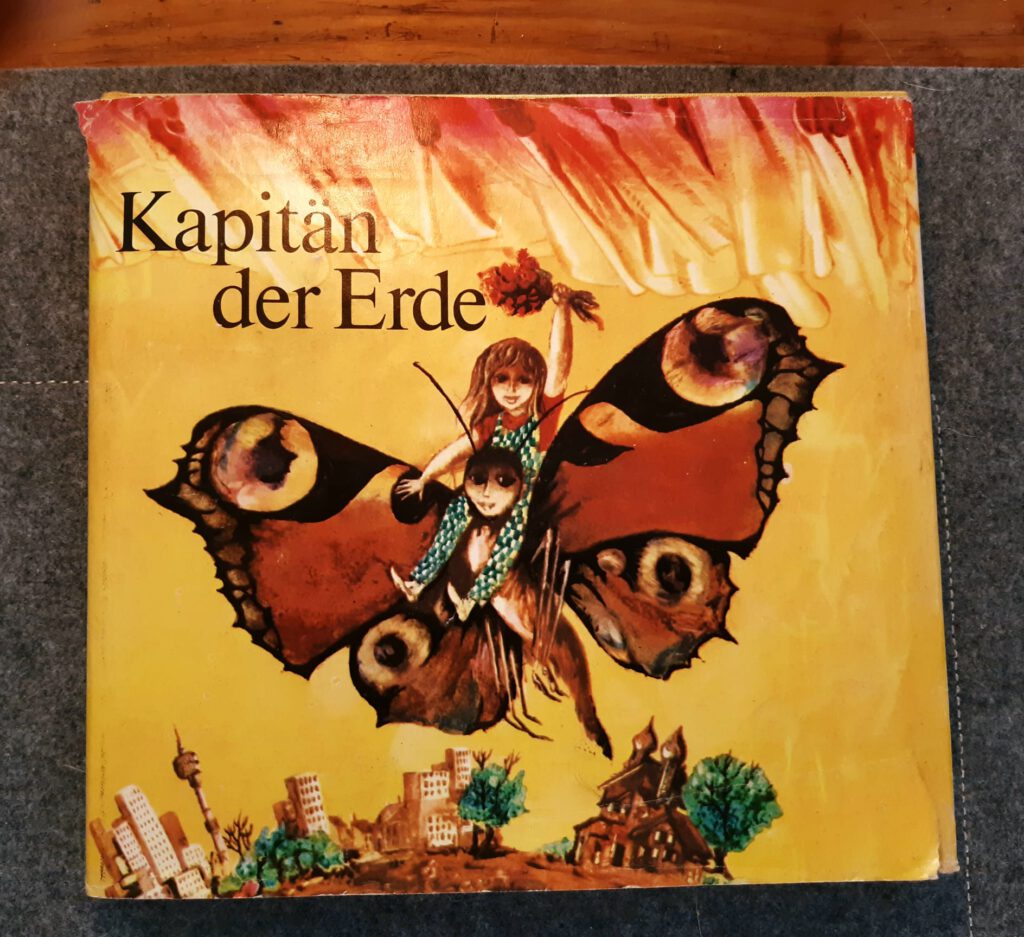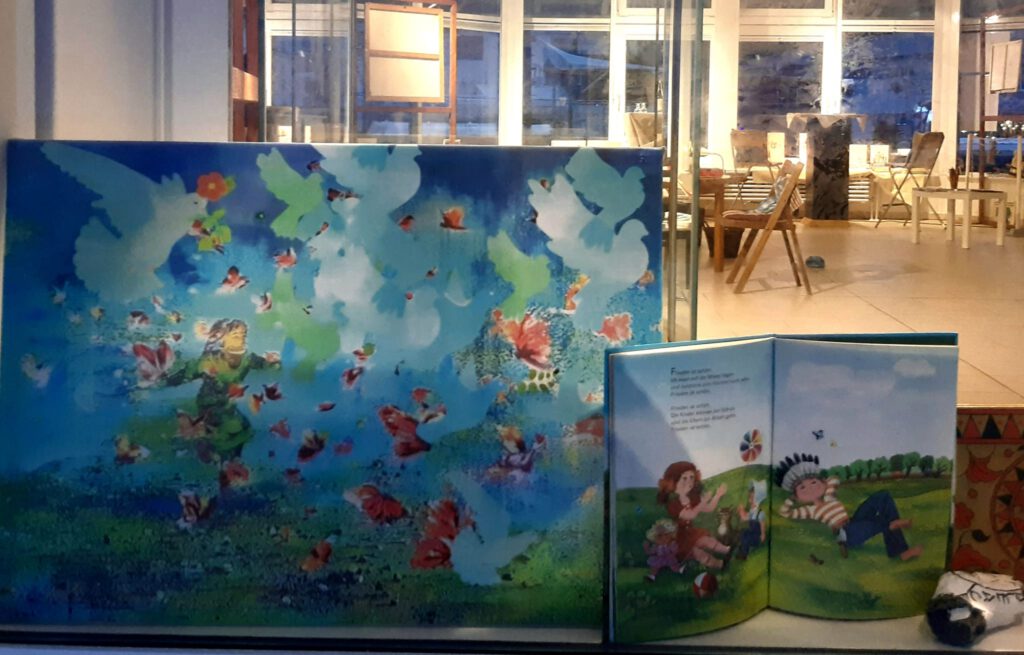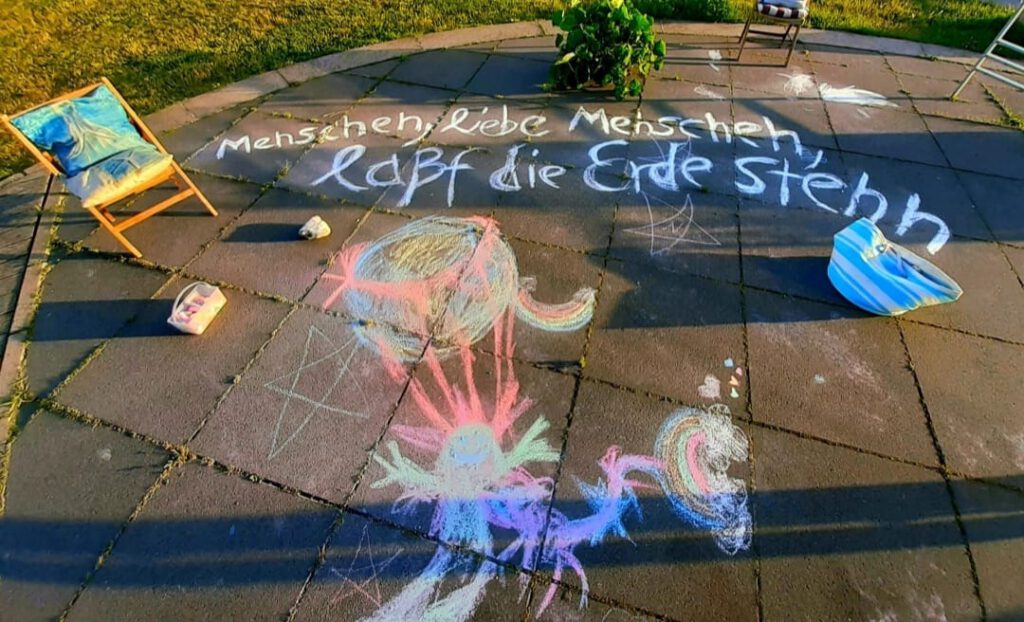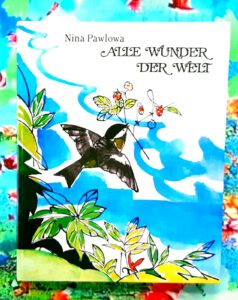
Once upon a time .....
I have been an avid reader and collector of GDR children's books since childhood.
These treasures of children's book literature and illustrations have accompanied me from a young age until today. Through contact with the many children's books and illustrations and the humorous approach to storytelling, my world as a child opened up at an early age. I believe that it is very important for the development of a young child to come into contact with fairy tales and fantasy worlds in the first years of life.
I have spontaneously chosen this particular topic of GDR children's literature from the former Soviet Union, because in the public media the entire Russian people is portrayed as belligerent. I would like to counter this with my train of thought that the people of Russia and Ukraine are actually a common people with a cultural-historical unity and common roots.
Ukrainian and Russian people, and especially children, are brothers and sisters and are not responsible for the current war of aggression by Vladimir Putin - they do not understand it, just as we adults do not.
Young families were deprived of their homes and cultural and historical roots.
The children with their mothers must flee, their fathers must go to war against their actual brothers. In this written just I would like to make simply a humanistic contribution that all children of the world for wars and dictatorial rulers at all nothing can.
Ukraine with the capital Kiev is actually the origin of the whole Russia. The roots of Russia are mentioned for the first time in 862 AD. From this arose Kievan Rus (now Kiev) and Rus Land - today's Russia and Ukraine.
My idea is to present Ukrainian and Russian children's books from the GDR period once. The Ukrainian fairy tales are the origin of all children's and youth books of Russia. I have an extensive private collection from the years 1949 to 1989 with about 1,500 original GDR children's books.
I will briefly show you the origin of Ukrainian fairy tales, because the ancient Ukrainian tales and fairy tales served different purposes than fairy tales in modern times and throughout Europe. The oldest genre of Ukrainian tales is the heroic epic of the Ukrainian people in saga form. This folk art was not written down in classical texts as in fairy tales. The stories were passed from mouth to mouth. In this way they survived for centuries until they were written down at some point.
They are something very special, because in the fairy tales the classic categories of good or evil do not occur. The tales that have been handed down do not frighten, nor are they absolutely creepy. Researchers explain this fact with the archaic origin of the majority of fairy tale themes, which were created long before the advent of Christianity.
In this train of thought, I would like to introduce you to the fairy tale world of another time.
I would be glad if you take a moment to get into the fantasy and thought world of Ukrainian and Russian storytelling.
These tales from Ukraine are full of natural phenomena with a hidden symbolic language that speak with nature and are probably traditions of the cultures of paganism.
"Seven heroes" who exist only in Ukrainian fairy tales
Fairy tale themes all over the world often have common motives and similar heroes. Nevertheless, there are characters that can be found only in Ukrainian fairy tales.
Thus the seven-year-old girl, a child who is only ever seven years old, who saves her father from ruin by solving extremely difficult riddles of the Lord for him one after another.
Mr. Kozkyj is an old tomcat that his owner brought to the forest to let him die, in the process the cunning cat behaved not badly, driving all the forest animals crazy and taking a chanterelle to wife....usw.
An example of this is also the sagas of the mysticism of the forest. In this forest, as briefly mentioned above, arise many heroic figures from different worlds. Thus, with the forest is often represented the underworld, where mythical heroes have to pass many tests. These tests are in the symbolic language equal to the way of the whole being of life up to death.
In these traditions, there are no completely abysmal negative depictions. The absolute villains with devil character developed only with the time, when Christianity arose.
For example, in the very ancient Ukrainian tales the wolf cult was quite widespread. Since archaic times people worshipped him as a totem deity. In his honor, the men of the tribe put on skins and furs of wolves and tried to imitate them and howled at the moon.
With the advent of Christianity, the wolf became more and more aggressive and a bringer of evil. In addition, the cunning snake appears more and more often in many traditions. The snake is the malefactor of all origin of the evil. Its symbol is reflected in Christianity also by the devil.
The magical thinking in the origin of Ukrainian sagas had to give way more and more to the rational in the following centuries. The mystical miraculous fairy tales became less popular. The written down tales of the Brothers Grimm came into fashion.
This becomes particularly clear in the Ukrainian fairy tales in the example of the transformations of the central malefactor, the snake. In its most anachronistic manifestation, it took on antropomorphic features. The snake gradually appeared as a human being. This reflects the process of retreat of the magical into the realistic world.
For example, in fairy tales the very popular gold-creating serpent appears as a chivalrous noblewoman: she grants a reprieve to the hero who has come to fight with her, always asking the question, "Are we going to fight or make peace?", she gives him the privilege of the first blow, and so on....
The world of fairy tales is a world of endless changes and transformations, reflecting the changes in society and human thinking.
I have presented a brief insight into the origin of the Ukrainian fairy tale, and now I would like to present to you a small sequence of the Russian fairy tale.
To set the mood, I would like to show a poem by the writer Aleksandr Puškin:
On the seashore in a quiet place
Stands an oak gnarled, crooked;
A tomcat strokes a golden chain
Constantly around the tree.
He goes to the right - tells a fairy tale,
To the left - and sings an old song.
There lives the Schrat, a pair of elves
On a stalk in the nearby reed.
Paths never trodden before lead
To a yet unknown country;
A cottage stands with open doors
On chicken feet there in the sand.
The sea, the forest, the fields are stuck
Full of wonder. In series
Enter thirty proud warriors
Together with Neptune, the old man,
The beach by the ray of the morning sun.
A king's son - the father's delight -
Delights with grace and intellect.
A wizard in a cloud
Carries a knight over land
And seas there before all people.
An emperor's child cries in the dungeon,
A brown wolf guards the Holde;
Koshchei is sitting there on his gold.
And Russia's soul is blowing in the wind.
In that fabled realm
I once enjoyed mead and beer;
The cat on the green oak
Told his fairy tales to me... A. Puškin
The history of Russian fairy tales and storytelling can be somewhat compared to the stories in Europe as written down by the Brothers Grimm.
The two Russian fairy tale collectors were Alexander Nikolajewitsch Afanassjew and Wladimir Ivanowitsch Dal. In 1870 they published "Русские детские сказки" - "Russian Tales of Desire", an edition for children, which was also distributed abroad.
In order to bring you a little bit closer to the Russian fairy tale soul, I have briefly listed a few typical Russian characters:
Once upon a time there was a stupid tsar's son and his youngest brother Ivan, who is not the brightest, Ivanushka, the fool, etc... It is also not simply called "the witch", but specifically: Baba Jaga. In the same way, it is not only "the immortal warlock", but Koschschei, the immortal. There is also not only "the beautiful, magical shieldmaiden", but Marja Morewna and so on. This can be continued endlessly. Exceptions are generic names like "the Aquarius" or titles like "the Frog Queen", but they are never called that in the fairy tale itself. In the same way, the most famous classical music piece "Peter and the Wolf" is a musical fairy tale for children by Sergei Prokofjew from 1936.
The Russian fairy tale world then unfortunately became Soviet children's literature with the October Revolution. This was initially used as an instrument for ideological education. For children and adolescents, the fairy tales, teeming with magic, sorcery and supernatural powers, were not contemporary and were very controversial for the Soviet ideologists. Incidentally, among the harshest critics of the fairy tale was Lenin's wife Nadezhda Krupskaya. In 1933 children's literature was put under official control. The state supported children's book authors with considerable financial resources and in return demanded ideological allegiance.
Fortunately, Soviet children's literature did not lack people who found ways to circumvent ideological dictates and censorship, such as Gorki and Marshak. They professed humanism and treated children with respect and sympathy.
Kornei Tschukowski (1882-1969) is considered the founder of the "era of the new children's book". Every Russian child knows his name, especially because of his fairy tales in poem form. In Soviet times, his children's books were published in editions of millions.
Tschukovski, a self-taught man from humble beginnings, was an astute critic, philosopher, and an excellent translator.
He had the idea for his first fairy tale poem "Crocodile" during a train ride. The fairy tale of the crocodile wandering the streets of Petrograd and organizing a conquering procession of animals into the city in order to free the conspecifics dozing away in the zoo was a spectacular success.
What was the secret of Tschukowski's fairy tales? They spoke to the child in an understandable lively language, without trying to instruct him. They were cheerful, playful and so humorous.
This generation also includes Eduard Uspenski (1937-2018), the creator of the cult figure Cheburashka. Cheburashka, also called Plumps in Germany. "Plumps" is found in a box of oranges. The brown-furred animal with big ears is still quite tired and full of food. But suddenly it folded open the big eyes, grabbed the cuteness scheme full. However, when the little cult figure stands up, it often topples over (tscheburachnutsja means to fall down), it awakened the protective instincts of entire generations in the peace-loving world since its invention in the 1960s. Even the crocodile Gena, employed as a keeper at the city zoo, has made friends with it.
The crocodile Gena also belongs to Uspenski's creation. Gena lives in an unspecified city and is employed there in the zoological garden as a crocodile. After work, it gets dressed and goes home. At the beginning of the plot, Gena the crocodile is lonely and looking for friends, because making friends can be difficult. With Cheburashka and a girl named Galya it finds them and so the story takes its course - literally to the animated film with cult status.
The story of "Gena the crocodile and his friends" - was even nominated for the Hans Christian Andersen Award in 2004.
At the moment Russia is again in Tscheburaschka fever. The cuddly creature is everywhere, but unfortunately it is also partly misused for war propaganda. This is a great pity, because the creator Eduard Uspenski was a wonderful calm, serene and charismatic man. His stories always tell about a small rebellion, which he gives place and space in his stories. This is, of course, very grateful material, even for animated characters, and with it he has inspired millions, and especially in Japan.
As you can see in my written sequence about Ukrainian and Russian fairy tales and children's books, there should not really be any cultural-historical difference between the two peoples. I hope for the future that the coming generations will discard ideological dogmas in order to live together peacefully within the framework of the European community.
In my opinion, the fairy tale has a magical power that acts on the human soul like a balm. It calms, gives hope and provides optimistic thoughts. The tales handed down over the centuries in fairy tale form read aloud in childhood possess magic. These tales in childhood can accompany us throughout our lives. Thus, fairy tales in childhood can become the first voyages of discovery into our childish soul life. Fairy tales as a key to oneself and thus discover the world with a lot of imagination.
Fairy tales are not bound to place and time. The typical opening formula is: "Once upon a time...". It thus opens the imagination as infinitely as the universe.
We are living in troubled times with many upheavals in society. The war in Ukraine is a great concern for all of us and especially for the children. Many refugees are coming to Germany, especially mothers with their children who have lost their homes. In this approach, I would like to remind you that the GDR is also history.
I myself was a political prisoner and was forced to leave the country. This reminds me of that time and what dictatorial states are capable of. Totalitarian systems create powerlessness in the face of humanity.
The GDR was also a power system with rigid conditions and yet, regardless of this, wonderful children's books were written.
Many of the children's books also show life in other countries and nationalities with different cultures and contemporary events. It seems important to me, especially in uncertain times, to show children positive stories through fairy tales. In today's world, digital media almost dominate. Therefore, it is very close to my heart to give a little food for thought with books. I believe that these children's books can inspire creativity and reflection.
My idea is to present Ukrainian and Russian fairy tales. It will open a fairy tale world for children and adults to playfully anchor the fairy tale world in reality.
The children should also be able to pick up the books, look at them, read them, and put their own ideas about what they have seen on a piece of paper with colored pencils. My concept involves providing tables with paper and crayons where the children can give free rein to their creativity under supervision.
Many of the GDR children's books feature Ukrainian and Russian writers creating stories together regardless of national borders. It follows that different cultures and nationalities are borderless in the fantasy world of writing.
We are all children of the earth in times of peace and war.
I will contribute some collages and pictures to the children's books in addition to the entire books. For my part, these thought-pictures are intended to show the children what books are capable of and how earlier authors were inspired to create works of art with stories from the former states, such as the GDR.
With my idea I would like to offer the fled families a positive, peaceful, hopeful approach, that unfortunately there have always been wars in history. And even if countries no longer exist or are in the process of change, as in the example of the GDR, after decades everything usually turns out for the better.
My concern is to bring creativity and the history of the past to the children. In this way I show that past cultural assets are artistically very valuable, even if a system no longer exists or is in transition and has become history.
At the same time, I would like to remind you that we grew up in the GDR with Russian and Ukrainian literature and its great writers and poets. For me, the former Soviet Union is anchored in my heart and I cannot understand the current situation.
Culture is so important in peacetime to open future perspectives for the younger generation for all cultural and social strata.
My exhibition ,,Lütt Matten und die weiße Muschel /Schätze der Kinderbuchliteratur der DDR", see project 2022, was perceived with great warmth here in Sassnitz. Some older visitors to the exhibition had tears in their eyes as they felt transported back to their childhood. The exhibition was later continued in the Sassnitz municipal library.
I am very excited to experience this project with numerous children and families in the fall.

